If You Want the Most Fuel-Sipping Toyota, Look No Further
Ask your butcher for a prime piece of meat, and they will give you the top grade in the case. Because of course, prime means superior. So when Toyota wanted to find a name for a Prius that was better than a Prius, they came up with Prius Prime. What is so special about the Prius Prime over the Prius? How about it goes further electrically, charges faster and looks noticeably different. The 2020 Toyota Prius Prime is all these things, and at a price that makes it the sales leader in plug-in hybrid electric vehicles (PHEV).

Push Button, Start Sipping Fuel
The front-wheel drive 2020 Prius Prime is powered by what Toyota says is its “most efficient hybrid powertrainâ€, which is where the car’s name “Prime†comes from–as in the best. Toyota considers this to be their most technologically advanced Prius they have ever made, going back more than two decades. Toyota has mastered its parallel hybrid drivetrain, or Hybrid Synergy Drive. This is where the electric motor can power the car by itself, the gas engine can power the car by itself, or they can power the car together. But the Prime offers one more power option: the car can be plugged-in and the battery will deliver up to 25 miles in pure electric, or EV mode.
The Hybrid Synergy Drive system comprises a 1.8-liter four-cylinder gasoline engine with two electric motors. The net 121 horsepower powers the front wheels through a continuously variable transmission (CVT). Note: the regular Prius model is offered with all-wheel drive, but not the Prime. This gives those living in snow country an efficient way to drive on slick roads, but not a plug-in option.
The EPA rating is 55 mpg city/53 highway/54 combined with an estimated 640-mile driving range. Adding together the gasoline and electricity, the EPA estimates 133 MPGe, or Miles Per Gallon Equivalent. MPGe is a measurement of how far a car can travel electrically, on the same amount of energy as is contained in one gallon of gasoline.

Confused? Don’t be, as the results aren’t worth any head-scratching. After 404 miles of driving the Prius Prime throughout Southern California, we averaged 61.4 mpg, which included a 125-mile run at 71 mpg. A big part of this efficiency is that Toyota engineered the Prime to default to electric mode and stay there (unless manually changed to Eco/hybrid) through the first 25 miles. When the battery runs out of juice, it reverts to being a hybrid where both the gasoline engine and the electric motors drive the car. You can watch Toyota’s system in action on the dash gauges, which shows how quickly the computers and sensors know which mode will be the most efficient at a particular time. Had we topped-off the battery each night, our average would have easily been closer to 125 mpg. But our goal on this review was to charge the battery full one time, drive the 25 all-electric miles, and then drive the Prius Prime as a hybrid. The reason was simple. We know busy people may forget to plug-in their Prime, so we wanted to show a fuel economy that was representative of this type of use.
It is important to note that fuel economy numbers reported by Clean Fleet Report are non-scientific. They represent the reviewer’s driving experience. Your numbers may differ.
The 2020 Toyota Prius Prime uses a lithium-ion (li-ion) battery that is charged through the regenerative charging system, which converts energy into the battery when applying the brakes or coasting. There is a standard drive mode “D†or the “B†mode, which recharges the battery at a faster rate when coasting or braking. In addition to the regenerative charging, the 8.8-kilowatt-hour li-ion battery is replenished by plugging in. It takes this long at the various charging levels:
120V – 5.3 hours: discharged to a full charge
240V – 2.1 hours: discharged to a full charge
The Prius Prime does not come with a 480V DC fast-charging option.
Driving Experience: On the Road
The four-door hatchback 2020 Prius Prime Limited, weighing in at 3,375 pounds, is a comfortable car to drive. The ride is smooth and stable, with no engine noise. Of course when running on electricity only, there is no engine noise because no engine is running.
The under-seat battery placement resulted in a low center of gravity and good handling. The 15-inch alloy wheels and 195/65 tires delivered handling that was direct, with little body roll, and the electrically power-assisted rack-and-pinion steering gave good road feedback. Acceleration was a momentum-building experience, with zero-to-60 in no more than 10.5 seconds. The Prius Prime is not marketed as a sporty car, but one that delivers a safe, secure and competent ride with outstanding fuel economy. Toyota delivered exactly what they promised. You want a sporty Toyota? Check-out the 86 and Supra. Now those will get your attention off the line!
The previously mentioned regenerative braking system has four-wheel disc brakes with ABS. The stops were straight and true with no brake fade nor the sometimes noticeable hybrid braking whine.
Driving Experience: Interior
The 2020 Toyota Prius Prime introduces a new rear seat that can now handle three passengers. In previous models only two would be invited along for the ride. For four adults though, or two child seats, the Prime’s interior is roomy with good head and leg room and a center fold down armrest with cup holders.

Clean Fleet Report was driving the Limited model, which is the top trim level coming in above LE and XLE. The Limited package gave us Toyota’s SofTex trimmed seats, which is a synthetic material designed for long wear. SofTex is soft to the touch, resists spills and is easy to clean. And for the vegans out there, there are no animal-based materials used in the SofTex manufacturing process.
The eight-way power-adjustable driver seat and the tilt/telescopic steering wheel made finding a comfortable driving position easy. The steering wheel has all the usual control buttons for audio, Bluetooth phone and cruise control. We liked the Qi-compatible wireless smartphone charger, the Homelink rearview mirror and the sun visors with extenders and vanity mirrors. These last two may seem odd to point out, but our last Prius was the last car not to have these.
Toyota added a feature that Clean Fleet Report has wanted to see on a Prius–a head-up display. The Prius for some reason has all the important gauges located in the center of the dash. With none being directly in front of the driver, this requires the driver to frequently look ten degrees to the right to know what is going on. The color head-up display, which was standard on the Prius Prime Limited we drove, was a pleasant and welcome surprise. We feel this safety feature should be standard equipment on all cars as it helps to keep the driver’s eyes facing forward, hence less distractions.
The Prius Prime has good front sight lines from a large windshield. Glancing in the mirror reveals the spoiler cutting horizontally midway through the rear window. A note to Toyota: we are not fans of the beeper going off inside the cabin when shifting into reverse. It is redundant and unnecessary because, as the driver, you know when the car is in reverse as the Rearview Camera pops-up on the screen, and there is an obvious “R†on the dash. Plus, where the beeping is needed for backing safety is outside of the car, where it would be the most useful.
The 2020 Toyota Prius Prime Limited came with the JBL premium audio system with navigation and an 11.6-inch high-resolution touch-screen color display. The amplified 10-speaker system included an AM/FM HD cache radio and SiriusXM with a 90-day trial subscription. You also get Siri Eyes Free, Apple CarPlay and Amazon Alexa compatibility. Knobs for the volume and channel selection would be helpful.
Driving Experience: Exterior

Redesigned for 2017, the Prius Prime is one of the most recognizable vehicles on the road. The overall wedge-shape of the five-door hatchback has not changed much since it was introduced in 2003. (The first non-plug-in Prius models were introduced in 1997 as four-door sedans.) The shape is driven to reduce wind resistance and drag to increase fuel economy. Toyota says it “looks like the future†with the design “purely intentional.â€
The front end is dominated by two large scoops on each corner of the lower fascia that house the LED fog lights and is topped by attractive rectangular quad-LED projector headlamps. The deeply sloped hood leads to a raked windshield and roof that peaks at the B pillar, then drastically slopes all the way to the integrated spoiler on the rear hatch. The glass on the hatch has a unique dual wave design. The hatch is made of carbon fiber, so it feels light at first touch but is solid when closing.
The near chrome-free design has body color heated, power mirrors and a shark fin antenna. The rear is dominated by the LED taillights, separated by a dark glass panel that runs the width of the hatch.
Safety and Warranties

The 2020 Toyota Prius Prime is well-equipped with the Star Safety System, Toyota Safety Sense, and Safety Connect. Active and passive safety features include eight air bags, vehicle stability and traction control, brake assist and smart stop technology. The advanced driver pre-collision technology includes lane departure alert, dynamic radar cruise control and pedestrian detection.
Additional safety features include remote keyless entry, push button start/stop and a tire pressure monitoring system.
The 2020 Prius comes with these warranties:
Basic Warranty – Three years/36,000 miles
Powertrain – Five years/60,000 miles
Corrosion Perforation – Five years/unlimited miles
Hybrid System – Eight years/100,000 miles
Hybrid Battery – 10 years/150,000 miles
Note: The Hybrid Battery Warranty of 10 years/150,000 miles applies to these CA Emission states: CA, CT, ME, MD, MA, NJ, NY, OR, RI and VT
Pricing
The 2020 Prius Prime comes in three trim levels of LE, XLE and Limited, with these base prices.
LE $27,900
XLE $29,800
Limited $33,800

Clean Fleet Report was driving the Prius Prime Limited with a MSRP of $33,800. With optional equipment the total price was $35,101. All prices do not include the $995 delivery, processing and handling fee.
The Prius Prime qualifies for federal and state tax credits that could reduce your final cost. Clean Fleet Report recommends contacting your CPA to be completely clear on the tax credits. Not relying on the dealer to provide this information will serve them and you best.
Also worth noting is that in California the Prius Prime qualifies for the coveted car pool lane stickers, allowing the driver with no passenger to use the HOV lane. This is no small thing when trying to get anywhere on a freeway in the Golden State. Make sure to check with your DMV to see if this benefit is available in your state.
Observations: 2020 Toyota Prius Prime Limited
The 133 MPGe EPA rating places the 2020 Toyota Prius Prime into a lofty space of high-mileage plug-in hybrid vehicles, including the Hyundai Ioniq, Honda Clarity, Kia Niro and the now-defunct Chevrolet Volt. Toyota has nothing to worry about as the Prius Prime is an excellent car, and the proven reliability of the Prius line-up gives confidence that this car will be in your garage for many, many years.

The smooth operation and seamless transition between gasoline and electric, the interior fit and finish, and the drive/ride attributes of the Prius Prime make it a serious contender for anyone looking at a midsize car–regardless of its power source.
You will pay more for a hybrid versus a gasoline-powered car, and more for a Prius Prime over a standard Prius. Is it worth it? If you drive most of your miles in town or in rush hour traffic, then you will benefit greatly by the pure electric mode of the Prime. The engorged fuel economy numbers will be a pleasing sight. But that isn’t the only fuel-sipping side to the Prius Prime. The conservative 54 mpg combined rating will make your long road trips a joy, leaving a few extra dollars for a trinket or two along the road.
Whatever you end up buying, enjoy your new car and as always, Happy Driving!
Make sure to opt-in to the Clean Fleet Report newsletter (top right of page) to be notified of all new stories and vehicle reviews.
Related Stories You Might Enjoy—Plug-in Options
Road Test: 2020 Volvo S60 T8 AWD PHEV
News: 2019 Plug-in Car Sales Drop Blamed on PHEVs
Road Test: 2019 Honda Clarity Plug-in Hybrid
Road Test: 2019 Subaru Crosstrek PHEV
Road Test: 2019 Mitsubishi Outlander PHEV
Road Test: 2019 Ford Fusion Energi PHEV
Road Test: 2018 Hyundai Ioniq PHEV
Road Test: 2018 Kia Optima PHEV
Disclosure:
Clean Fleet Report is loaned free test vehicles from automakers to evaluate, typically for a week at a time. Our road tests are based on this one-week drive of a new vehicle. Because of this we don’t address issues such as long-term reliability or total cost of ownership. In addition, we are often invited to manufacturer events highlighting new vehicles or technology. As part of these events we may be offered free transportation, lodging or meals. We do our best to present our unvarnished evaluations of vehicles and news irrespective of these inducements.
Our focus is on vehicles that offer the best fuel economy in their class, which leads us to emphasize electric cars, plug-in hybrids, hybrids and diesels. We also feature those efficient gas-powered vehicles that are among the top mpg vehicles in their class. In addition, we aim to offer reviews and news on advanced technology and the alternative fuel vehicle market. We welcome any feedback from vehicle owners and are dedicated to providing a forum for alternative viewpoints. Please let us know your views at publisher@cleanfleetreport.com.

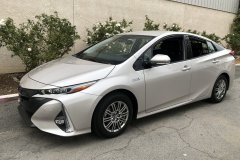
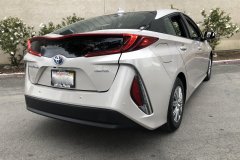
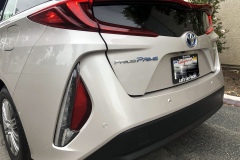
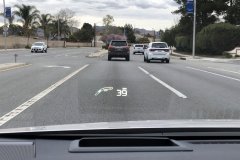
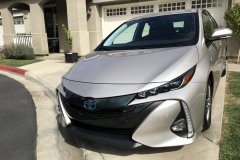
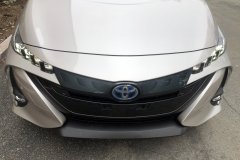

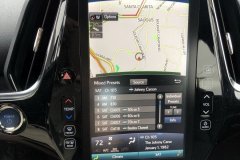


10 thoughts on “Road Test: 2020 Toyota Prius Prime Limited”